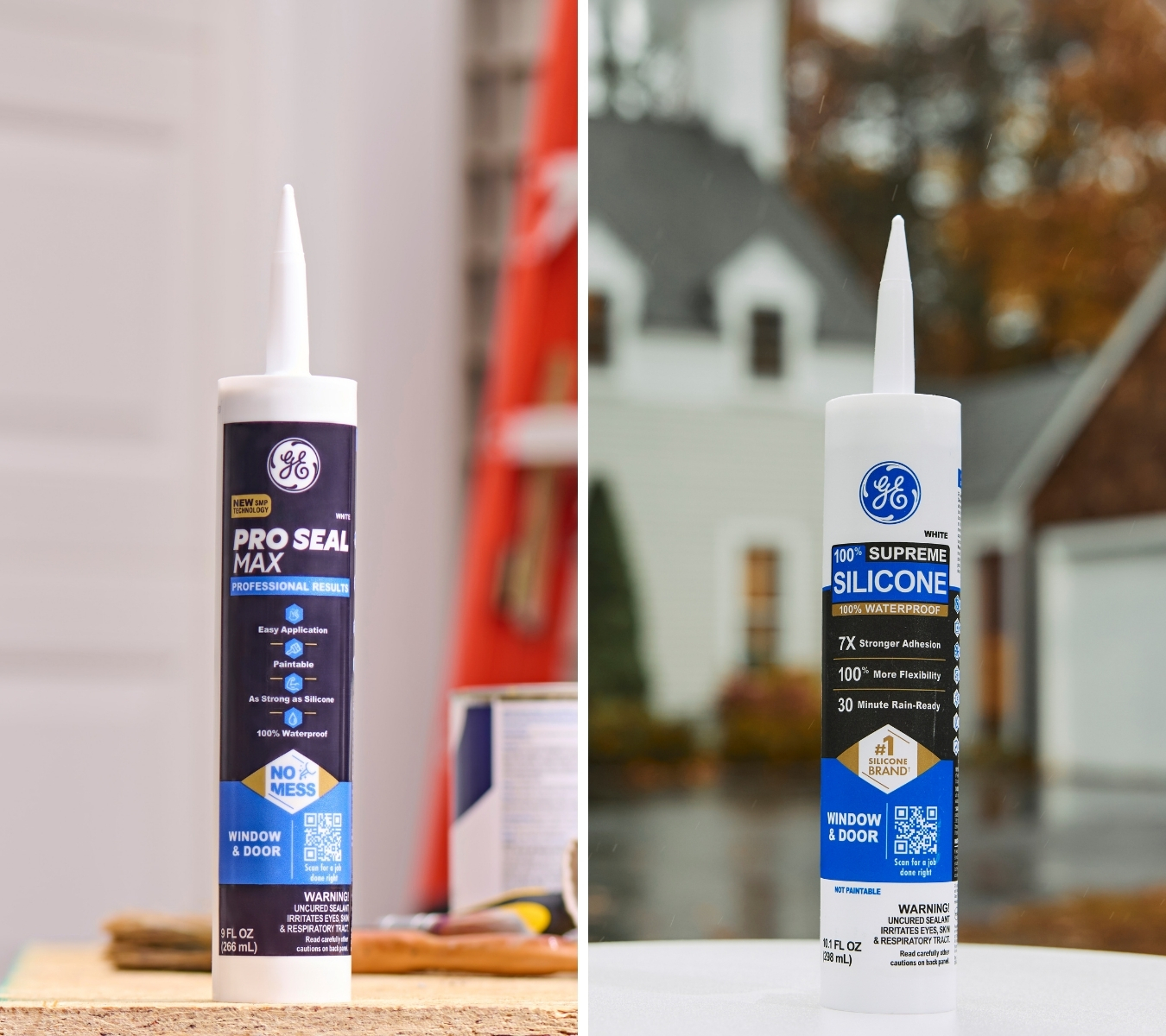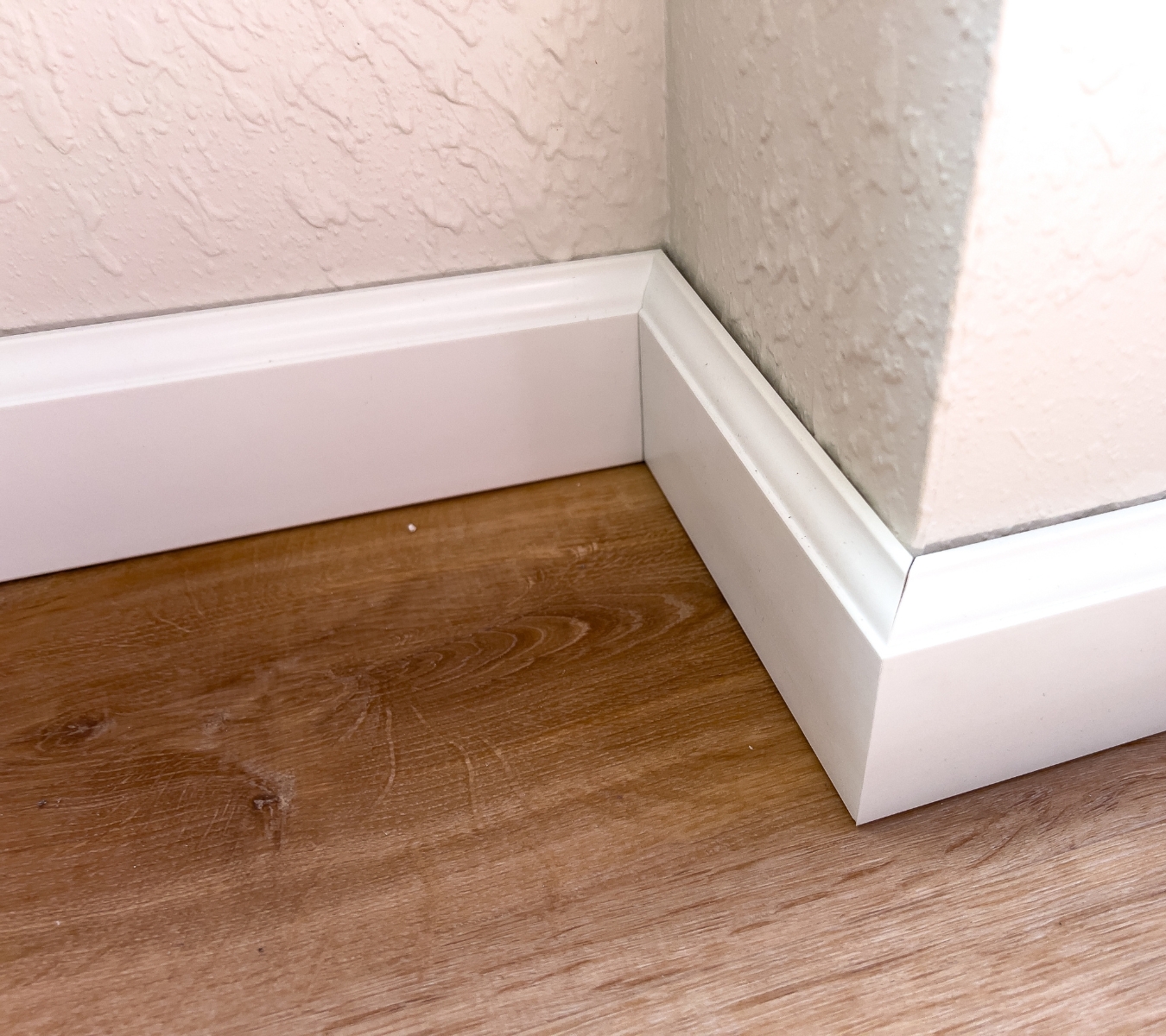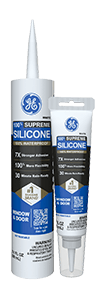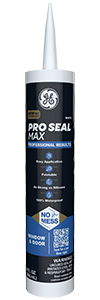Contractors know that not all sealants are created equal, and picking the wrong one can mean callbacks, leaks, and unhappy clients. Silicone and hybrid sealants each bring different strengths to the job. This guide breaks down the differences so you can match the right GE product to the conditions you face on every project.
Contractors often need to balance performance with job-site efficiency, and GE offers options in both 100% silicone and hybrid categories to meet those needs. While silicone shines in extreme conditions, hybrid sealants like the Pro Seal Max series give pros a versatile, durable option for mixed-material jobs and visible finishes.
What matters most on the jobsite
Sealants do more than just fill gaps. They must stand up to the conditions the building will face for years. Contractors need products that can handle variable expansion and contraction, as joints in siding, windows, and trim constantly shift with seasonal temperature changes.
UV exposure is another significant factor. Exterior joints break down quickly under harsh sunlight if the wrong sealant is used. Moisture quantity is similarly important, whether it comes from rain, snow, or daily cleaning cycles indoors. Beyond performance, contractors also need to consider paintability and finish options, especially on visible trim and decorative surfaces.
Silicone sealants
Silicone sealants have long been a favorite among contractors because of their proven performance in demanding environments. Their biggest strength is flexibility. Once cured, pure silicone remains highly elastic, allowing as much as 50% joint movement without breaking or cracking. This makes silicone ideal for exterior joints exposed to widely shifting temperatures or areas with constant movement. Silicone also excels in water resistance, making it a natural go-to for bathrooms, kitchens, and other high-moisture zones. Additionally, silicone is highly resistant to UV rays, mold, and mildew, so it holds up well under both prolonged sunlight and damp conditions.
However, 100% silicone sealants do have limitations. They are generally not paintable, which can be a drawback on visible trim or decorative surfaces where color matching matters to clients. They also tend to require more careful surface preparation and can be more difficult to clean up during application. Judged solely on performance metrics, silicone sealants outperform hybrid alternatives, but not every job requires performance extremes. In either case, you can simplify the sealant tooling process with GE’s Sealant Remover Tool and Sealant Smoothing Tool.
Hybrid sealants
Hybrid sealants are gaining popularity with contractors because they balance strength, versatility, and appearance in ways that 100% silicone cannot always match. Their biggest selling point for contractors is paintability. With hybrid sealants, you can get exact color matches on siding and trim finishes. Hybrids also provide strong adhesion across a wide range of substrates, including wood, masonry, fiber cement, and metals.
Compared to 100% silicone, hybrid formulations like GE’s Pro Seal Max series are rated for 25% joint movement, which is more than sufficient flexibility for many building applications. Hybrid sealants also cure quickly, with some products paint-ready in just one hour, and resist abrasion better than pure silicone.
GE Sealants for contractors: product comparison

Contractors often need to balance performance with job-site efficiency, and GE offers options in both 100% silicone and hybrid categories to meet those needs.
GE Supreme Silicone Window & Door Sealant is a 100% silicone product designed for maximum flexibility, rated to handle significant joint movement (Class 50 under ASTM standards). It provides outstanding resistance to UV rays, mold, and constant moisture, making it the best choice for projects exposed to harsh weather or environments with frequent water contact.
On the hybrid side, GE Pro Seal Max Window & Door Sealant delivers strong adhesion across a broad range of materials. It resists shrinking, cures to a tougher finish that withstands abrasion, and tools more easily than pure silicone, making it especially contractor-friendly. While silicone shines in extreme conditions, hybrids like the Pro Seal Max series give pros a versatile, durable option for mixed-material jobs and visible finishes.
Silicone and hybrid sealant uses
Here’s a breakdown of some common sealing jobs and what kind of sealant is optimal for each.
1. High moisture and constant wet zones
For bathrooms, kitchens, and other spaces exposed to constant water, GE Supreme Silicone Kitchen & Bath Sealant is the stronger choice because 100% silicone remains permanently flexible and waterproof. Its resistance to mold and mildew growth ensures long-term protection in showers, sinks, and backsplashes where failures could lead to costly water damage.
2. Exterior façades exposed to UV and seasonal shifts
Siding, exterior trim, and door frames are constantly under stress from sunlight, rain, and temperature swings. These are areas where GE Pro Seal Max Window & Door Sealant excels. Its hybrid formulation offers stronger adhesion to multiple substrates and resists shrinking over time.
3. Mixed-material joints
Jobs that involve bonding to mixed materials can be challenging because not every sealant adheres well across such different substrates. GE Pro Seal Max Window & Door Sealant wins out in these situations because of its broad adhesion profile and its ability to stay bonded through movement and seasonal change.
4. High-traffic, impact-prone areas

Interior trim, baseboards, and entryway joints are frequently subject to scuffs and bumps. In these cases, you’ll want the sealant that cures to a tougher finish. Hybrid sealants provide abrasion resistance and shrink less than silicones. While silicone remains excellent for flexibility, it is softer once cured and can be more prone to surface damage in high-contact areas.
To get GE Sealants’ products for your home improvement project, visit these fine retailers in the U.S. or Canada.



